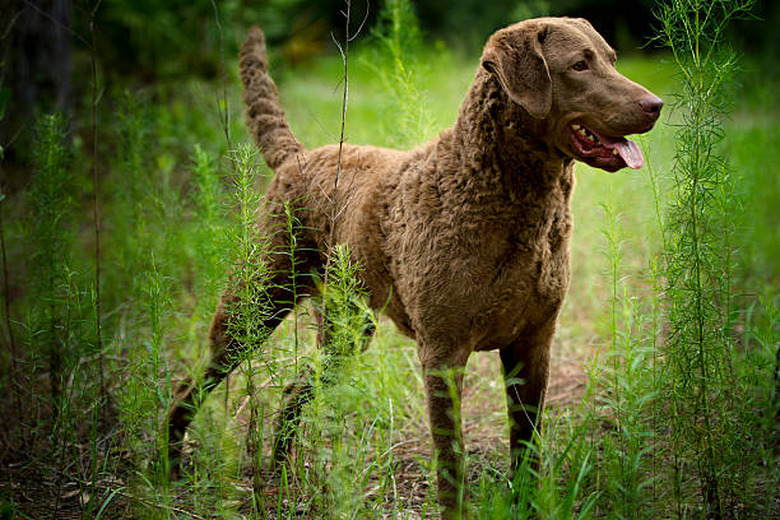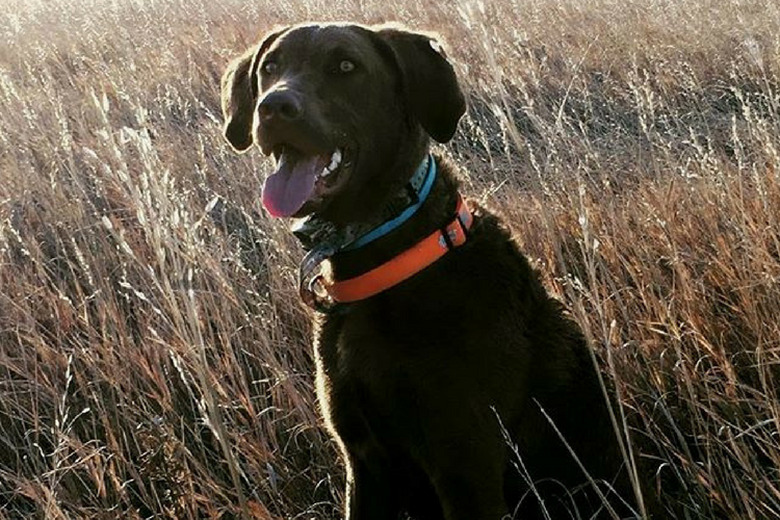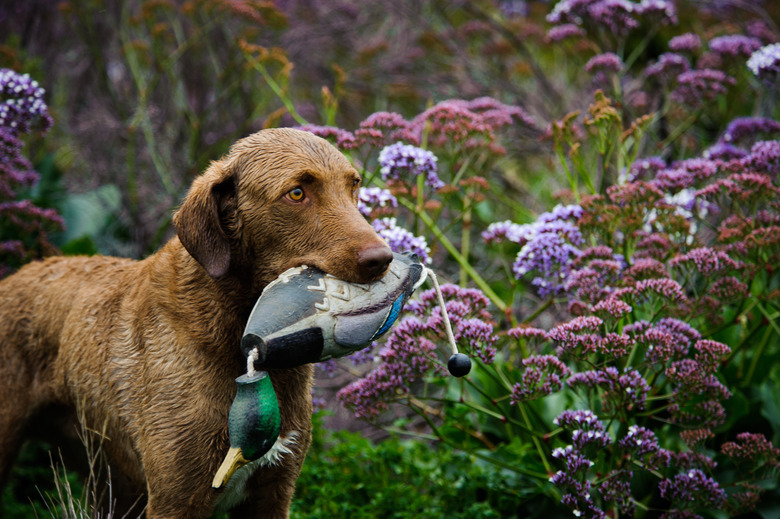Chesapeake Bay Retriever Dog Breed Facts & Information
Lovers of the water, listen up! Here is a beautiful doggo that thrives in water and is ready to be your next swimming partner.
Chesapeake Bay retrievers are originally hunting dogs with high intelligence, willful spirits and loads of energy. They make perfect companions for experienced dog owners who can provide their pup with sufficient physical activity. This doggy is ready to work and play!
Chesapeake Bay retriever characteristics
Chesapeake Bay retriever characteristics
These powerful water retrievers hail from the American Kennel Club's sporting breed group and have strong, large bodies. Males are 23-26 inches and 65-80 pounds. Females are a bit smaller with average sizes of 21-24 inches and 55-70 pounds. Chesapeake Bay retrievers, or Chessies, are athletic and loving companions.
This beautiful, muscular-bodied breed comes with a water-resistant double coat, perfect for his swimming and duck hunting activities. The coat is meant to help the Chessie blend into his surroundings and can be any shade of brown, sedge or deadgrass (a dull tan color). Mostly, this breed is known for their heart-melting amber eyes.
History of the Chesapeake Bay retriever
History of the Chesapeake Bay retriever
The Chesapeake Bay retriever is one of the few dog breeds that can claim the U.S. as their place of origin. They are believed to originate from two Newfoundland dogs named Sailor and Canton, who were known as excellent water dogs with a knack for duck hunting. Their descendants inherited their excellent hunting and water skills.
The AKC has recognized these retriever dogs from the club's beginnings in 1878 and the American Chesapeake Club was formed in 1918. Chessies are Maryland's favorite dog, and two cast-iron versions guard the Chesapeake Bay Maritime Museum.
Chesapeake Bay retriever temperament & training
Chesapeake Bay retriever temperament & training
Breed is not a reliable indicator of personality; however, Chessies are known for their happy disposition, intelligence, bravery, and obedience. They are playful, a little goofy, and affectionate like most retriever breeds but more wary around strangers, making them excellent watchdogs.
Chessies require consistent but positive reward-based training from an experienced dog owner. Obedience training classes serve them well in order to establish proper canine to human communication. Make sure to socialize them young to people and other pets. Otherwise, Chessies can become territorial, somewhat aggressive, and willful.
With proper socialization, they are loving and gentle with the children of the family as well as other pets, but supervising them around small bodies is recommended.
Chesapeake Bay retriever grooming
Chesapeake Bay retriever grooming
Chessies have a harsh outer coat and soft undercoat. Like most retrievers, though, Chessies shed heavily and should be brushed weekly. Use a rubber curry brush to help remove hair and distribute their natural oils throughout the coat.
This breed should be bathed as little as possible to avoid stripping out the protective oils of the coat that make it water resistant. A warm bath once or twice during shedding season should suffice.
Don't forget to trim your Chessie's nails every two to three weeks to keep them from impeding his mobility.
Chesapeake Bay retriever exercise & health
Chesapeake Bay retriever exercise & health
Chessies are sporting dogs who require a healthy amount of exercise to meet their high energy level. They love the water and thrive there when chasing after waterfowl, but will also settle for a large grassy field to call their playground for the day. Forty minutes of fun activities like games of fetch, agility training, and dock diving should keep your Chessie happy each day, along with several leisurely walks.
These active outdoor athletes are generally healthy with a life span of between 10 to 13 years. However, this dog breed is prone to developing a few health issues including hip dysplasia, elbow dysplasia, eye issues like progressive retinal atrophy (PRA), exercise induced collapse, bloat, Von Willebrand's disease, and degenerative myelopathy.
Chesapeake Bay Retriever puppies
Chesapeake Bay Retriever puppies
Chessies aren't fully grown until they reach around 18 months of age. Feeding your puppy a large-breed puppy food until she's an adult is best to prevent her from growing too quickly and developing joint issues. Most pups should be around half their adult size of 55 to 80 pounds when they reach 6 to 8 months old.
Read more about how to find the best dog toys and how to potty train a puppy.
References
- American Kennel Club: Chesapeake Bay Retriever
- DogTime: Chesapeake Bay Retriever
- Dog Breed Info: The Purebred Chesapeake Bay Retriever
- Hill's Pet Nutrition: Chesapeake Bay Retriever Dog Breed Information and Personality Traits
- American Chesapeake Club: Breed Health Statement
- Dog Food Smart: Chesapeake Bay Retriever Growth Chart – Size & Weight Chart
- Aubrey Animal Medical Center: Chesapeake Bay Retriever


